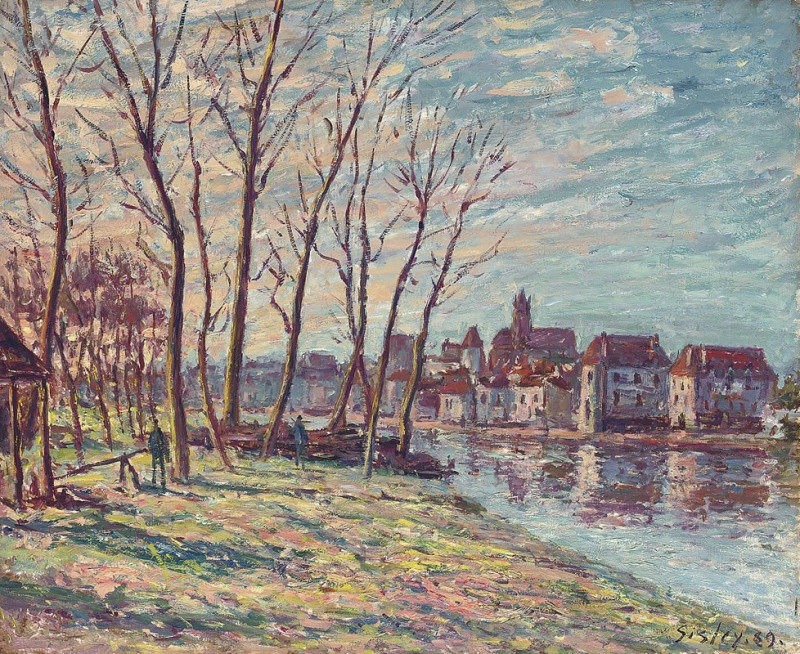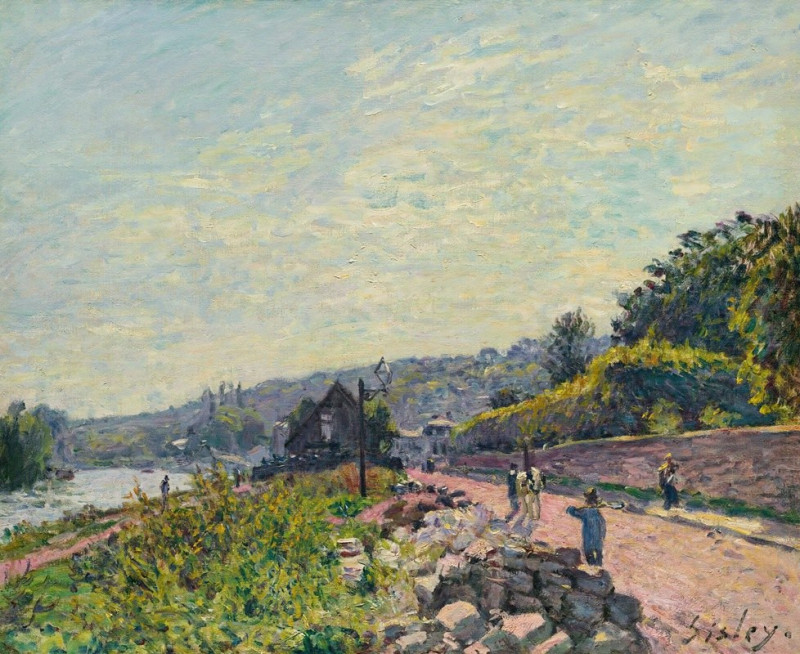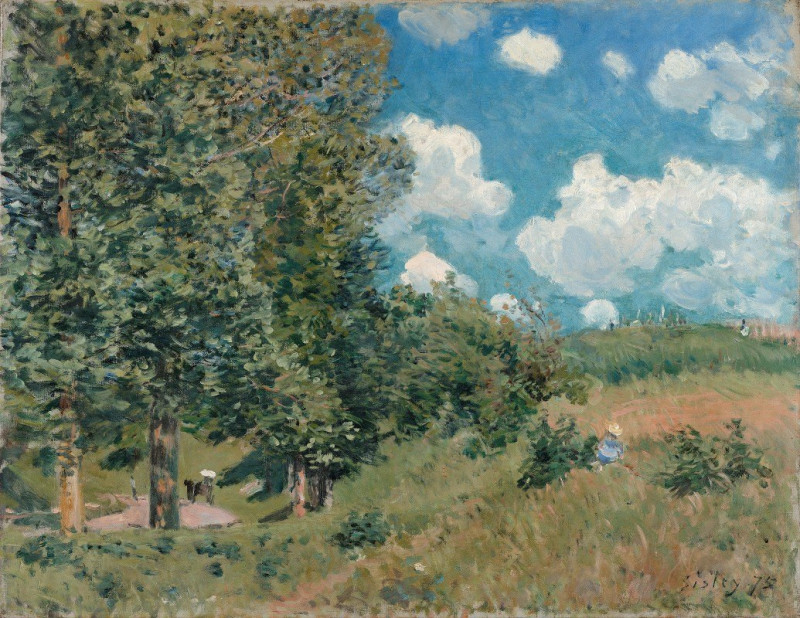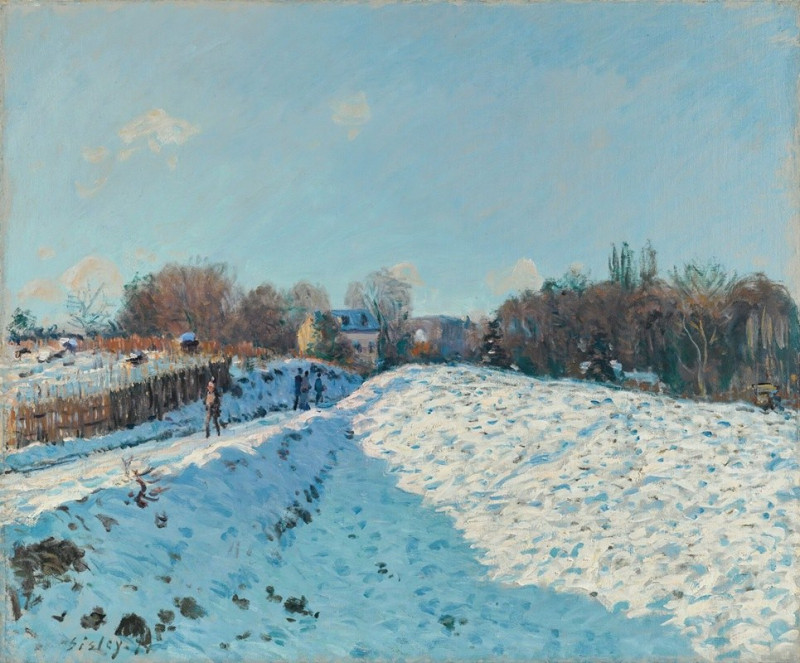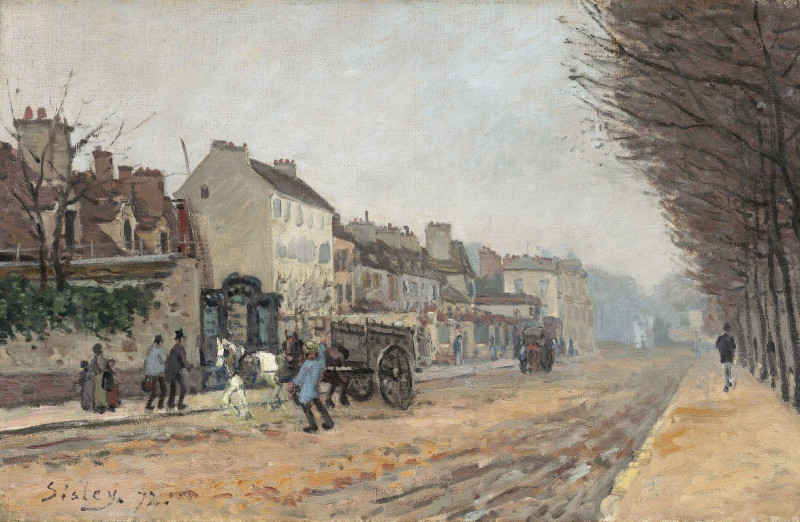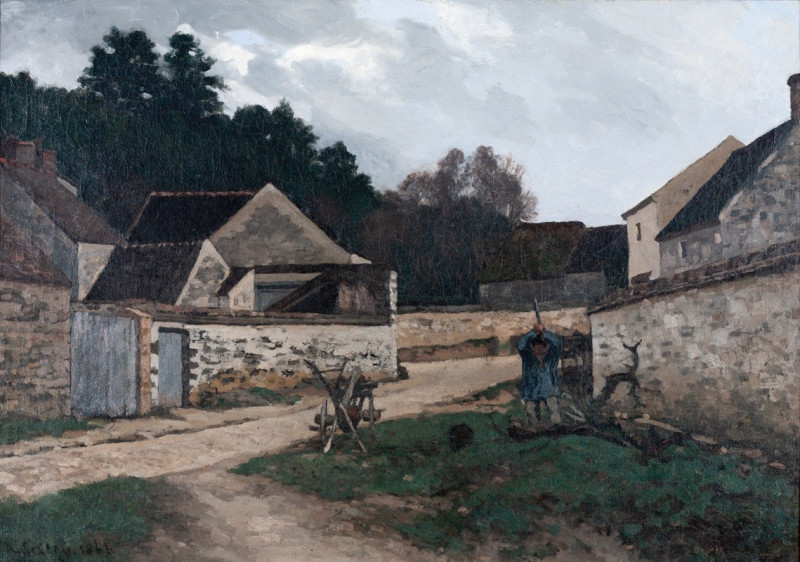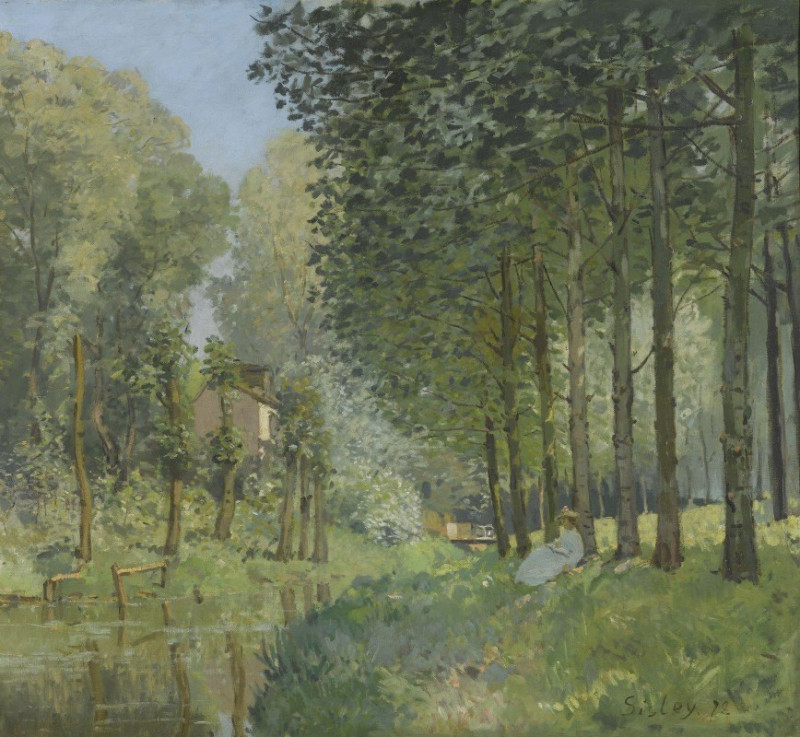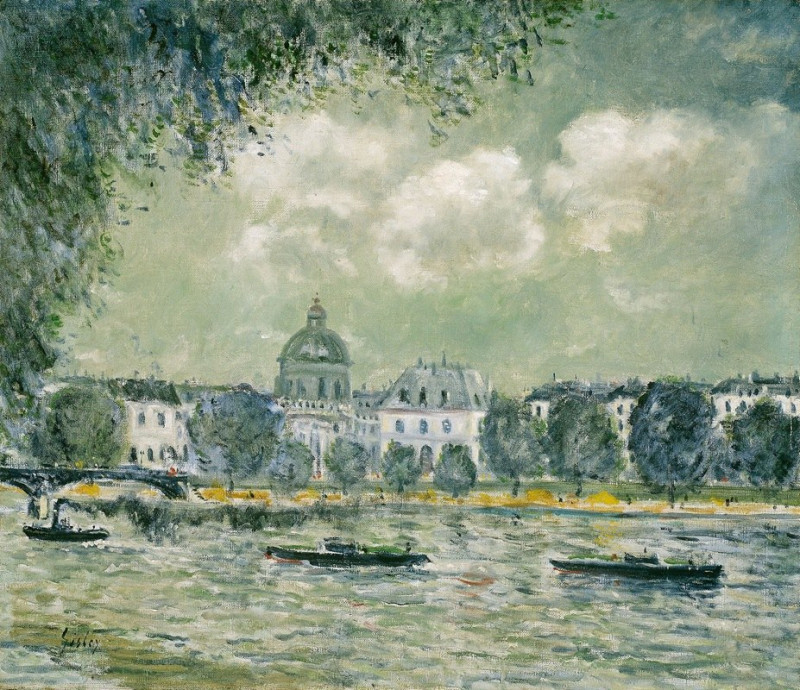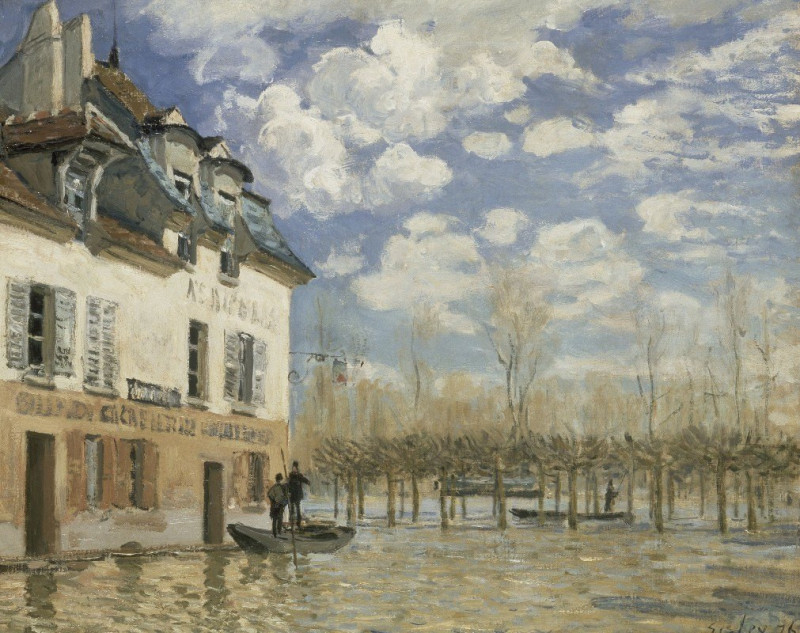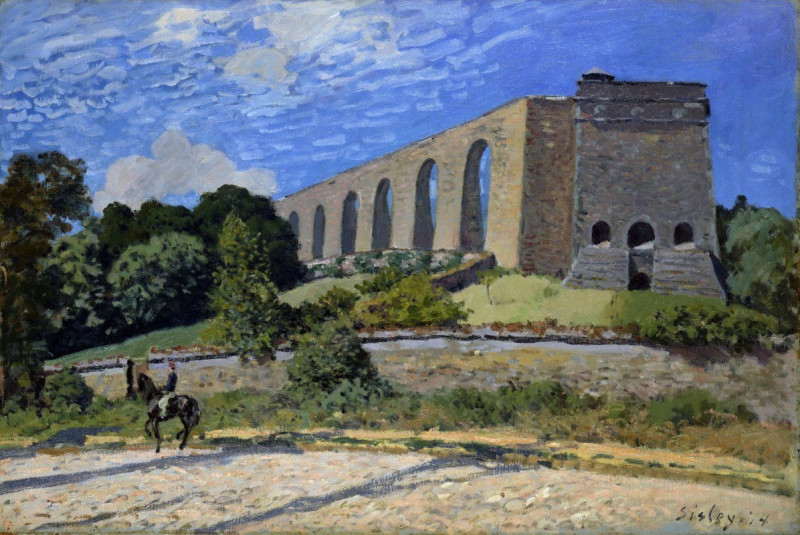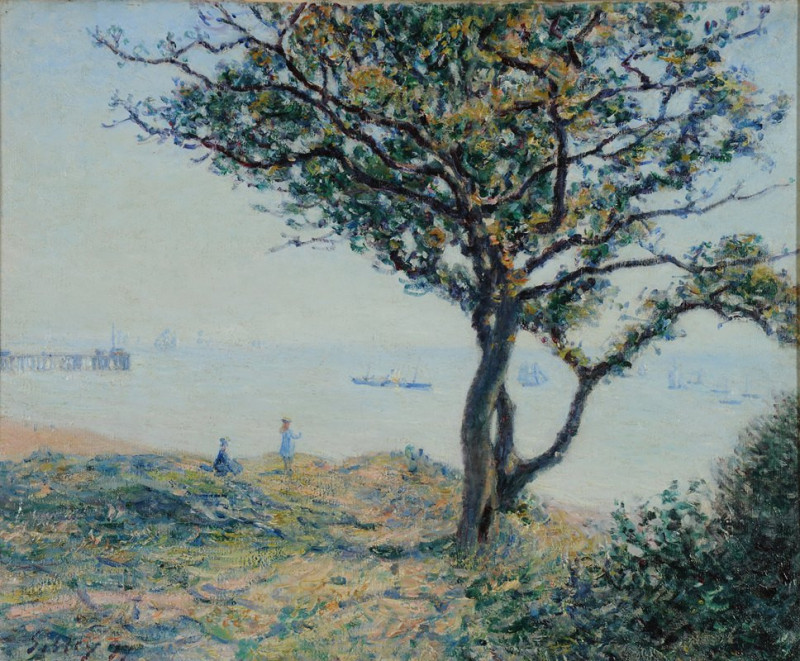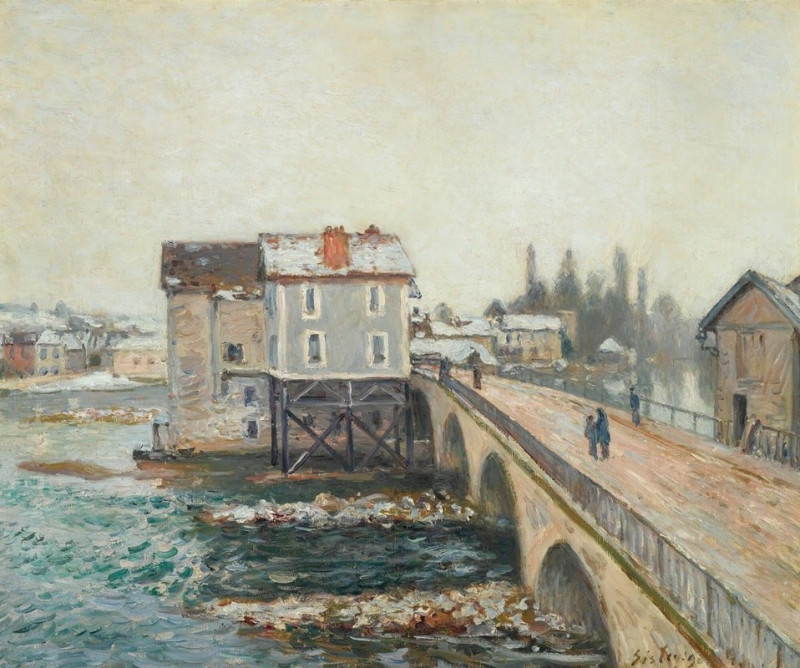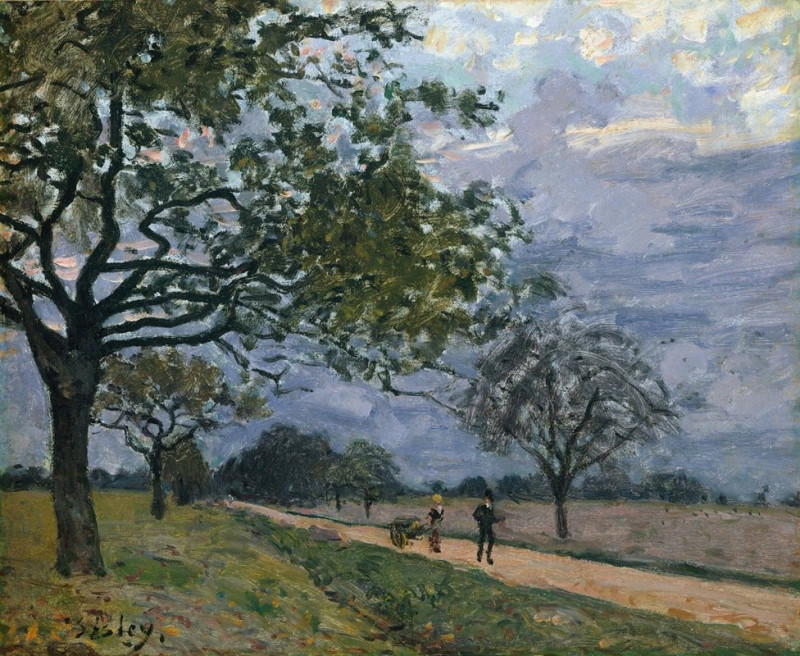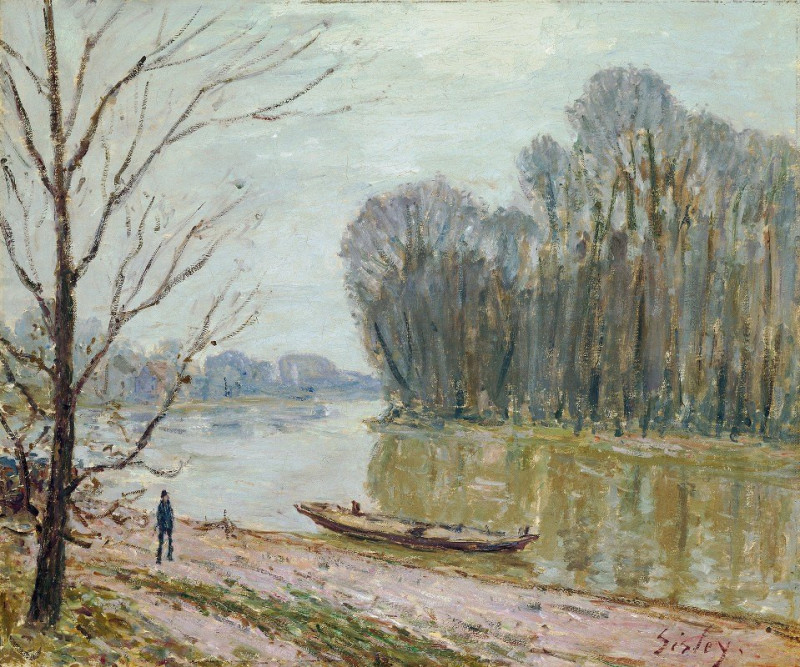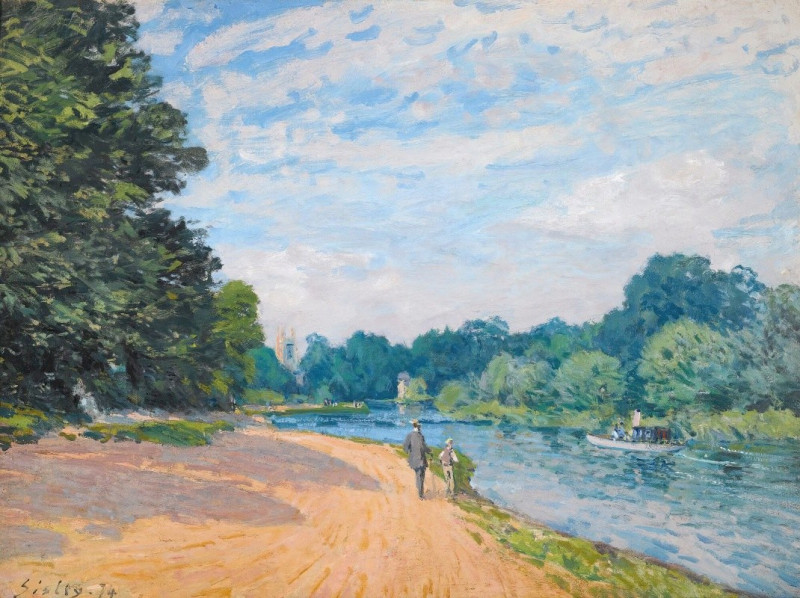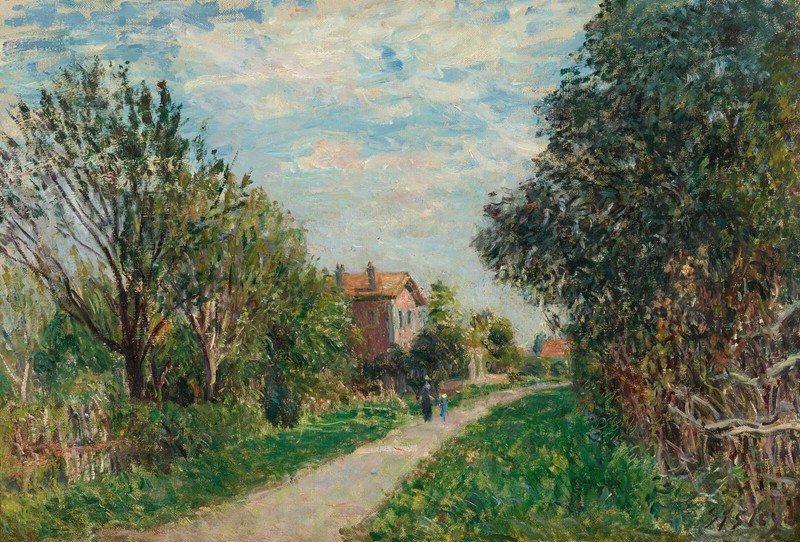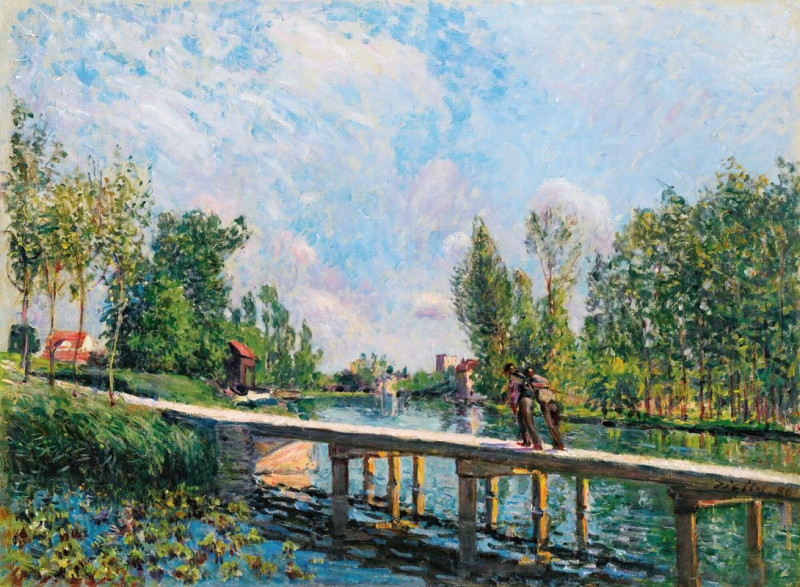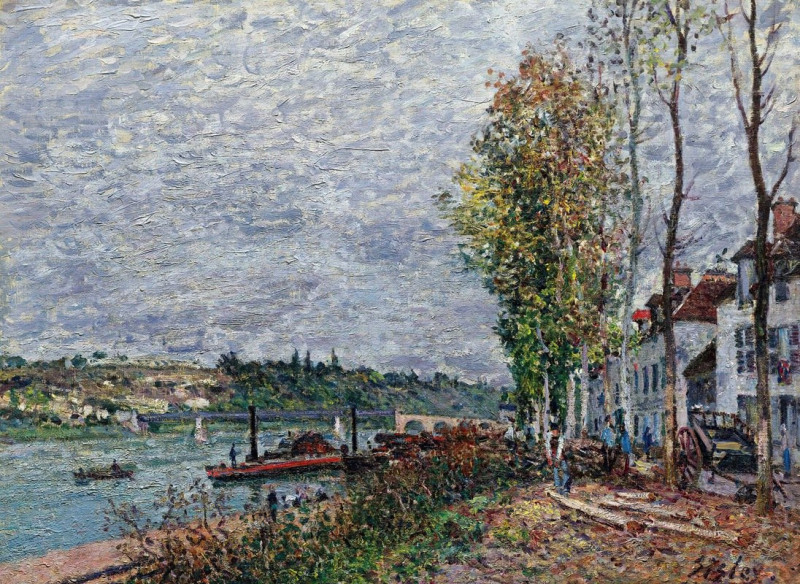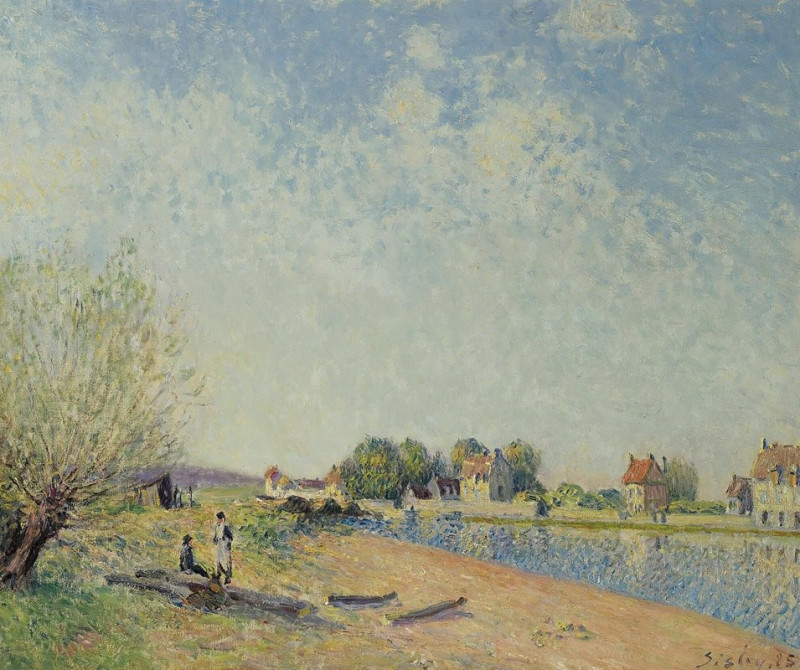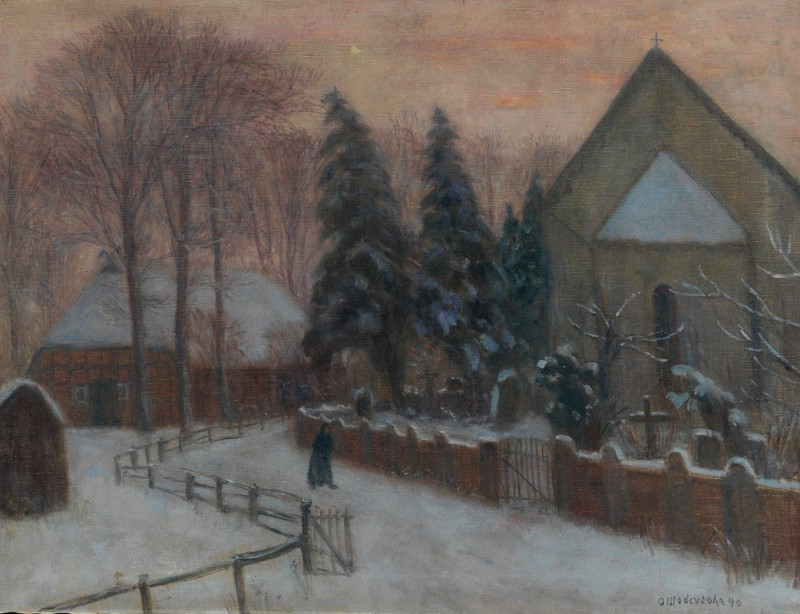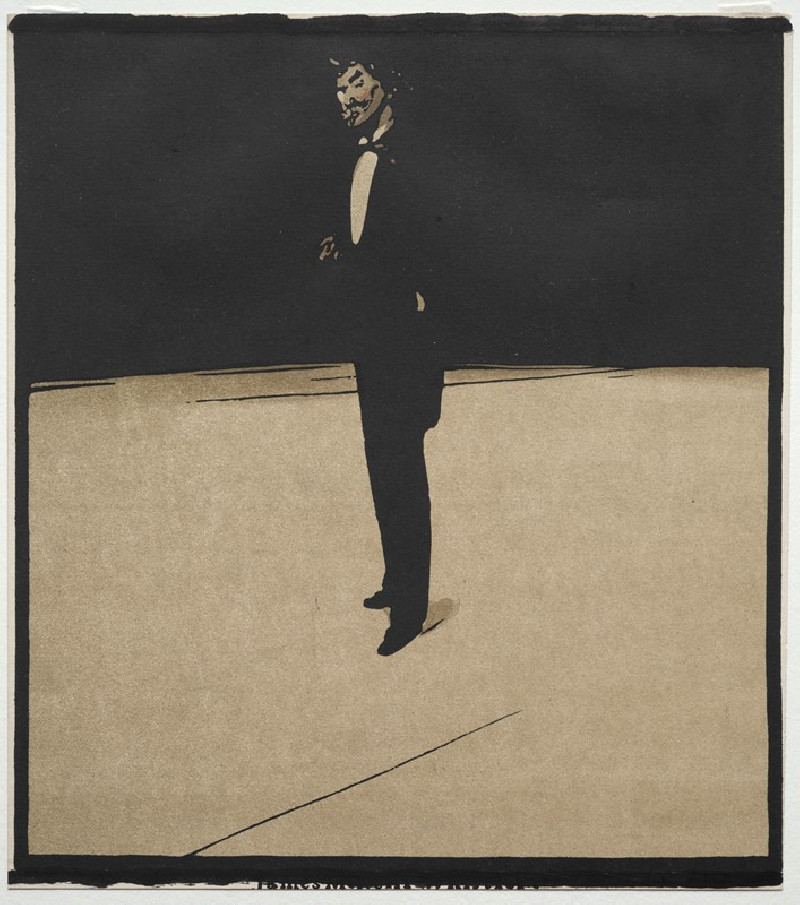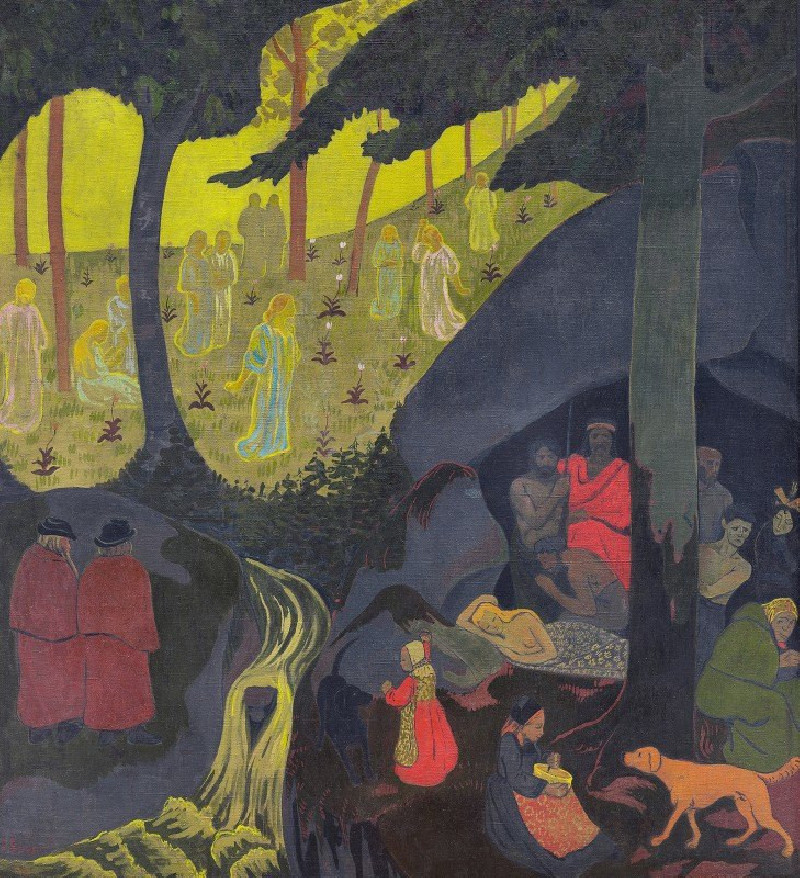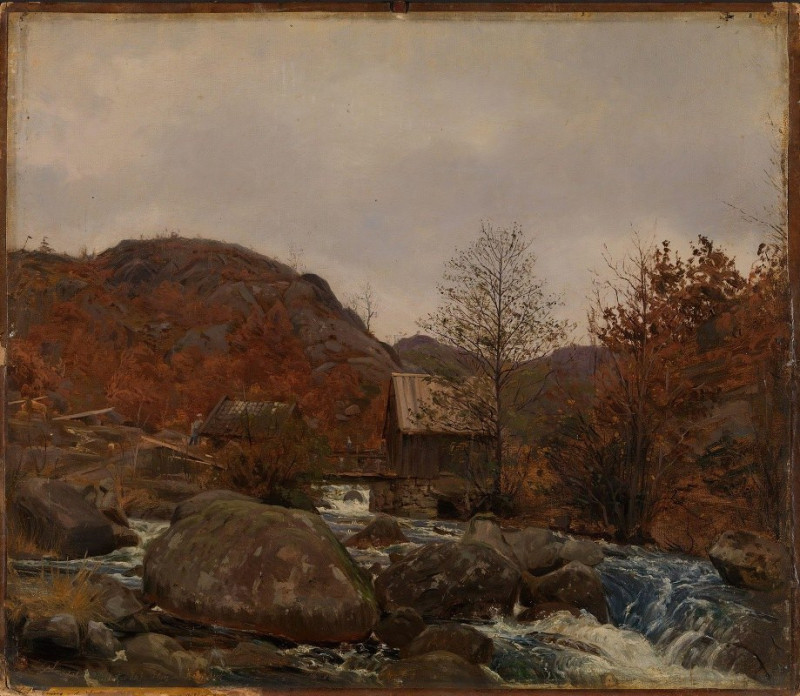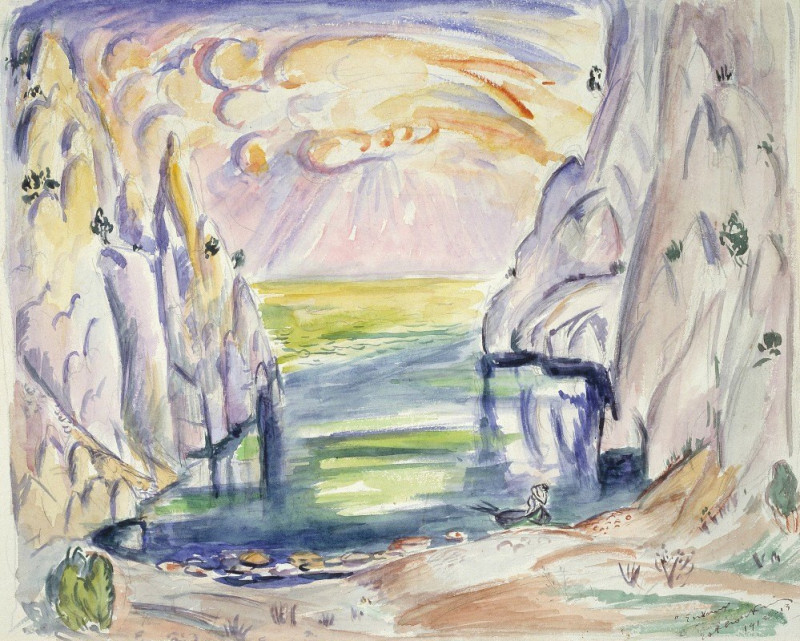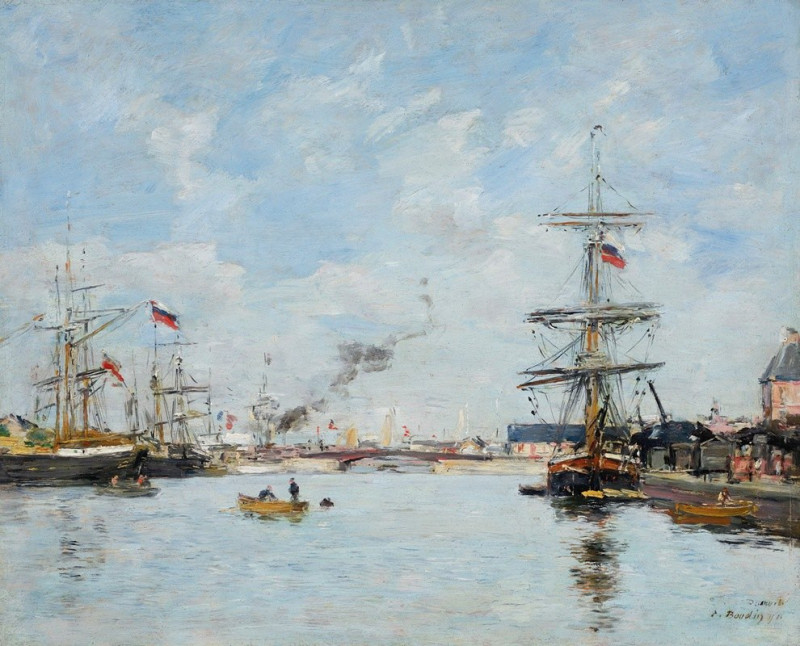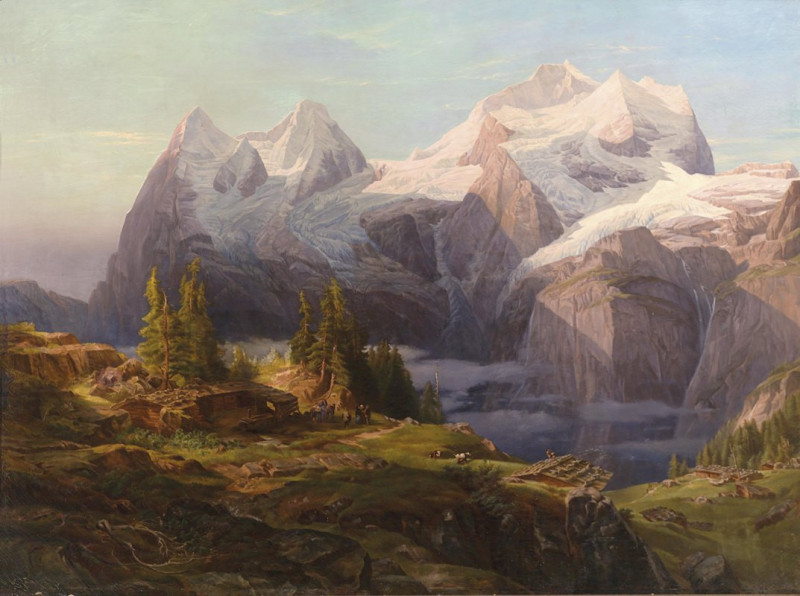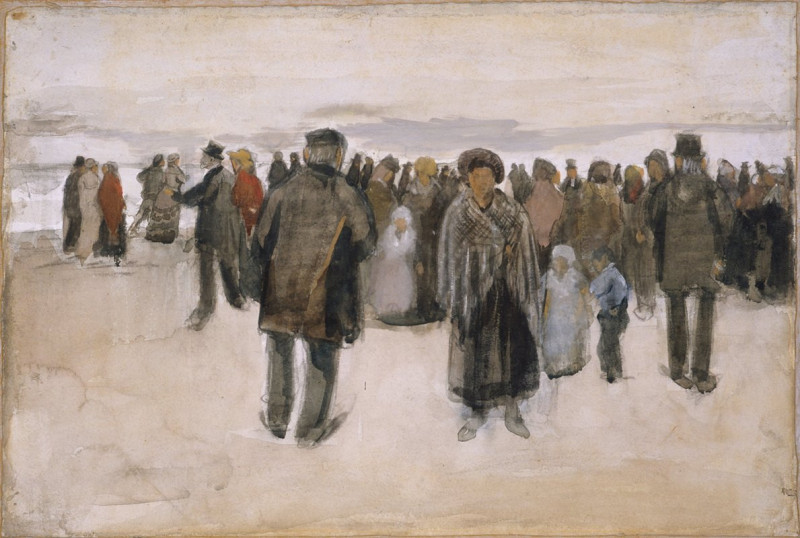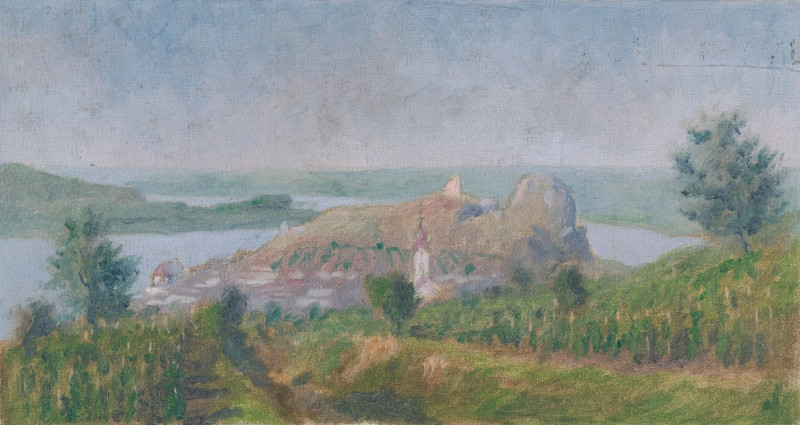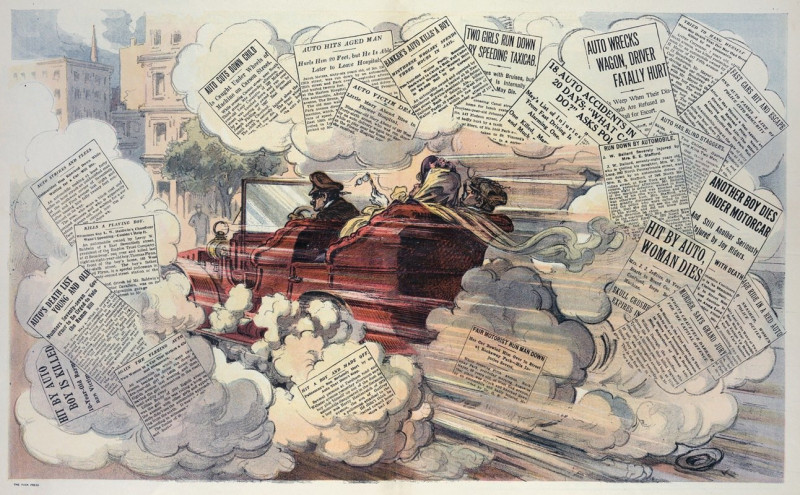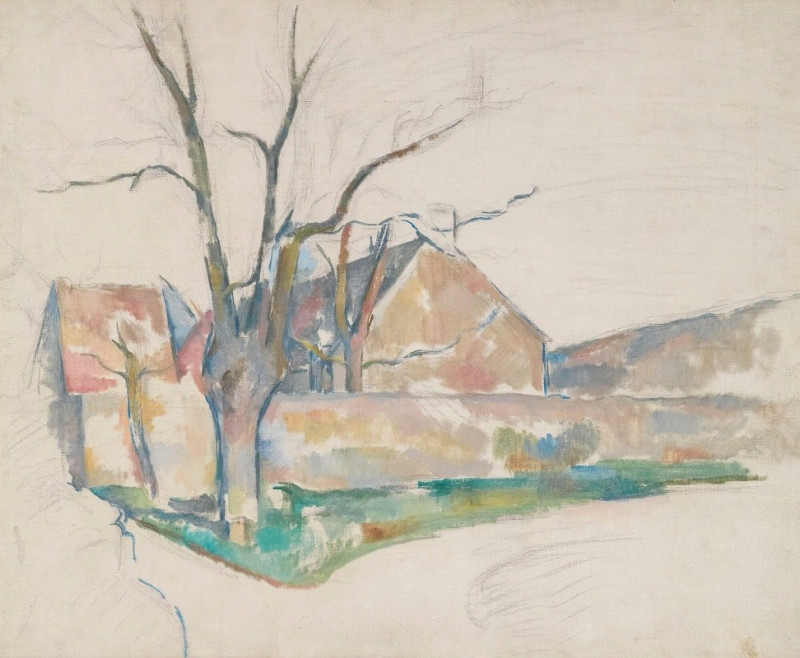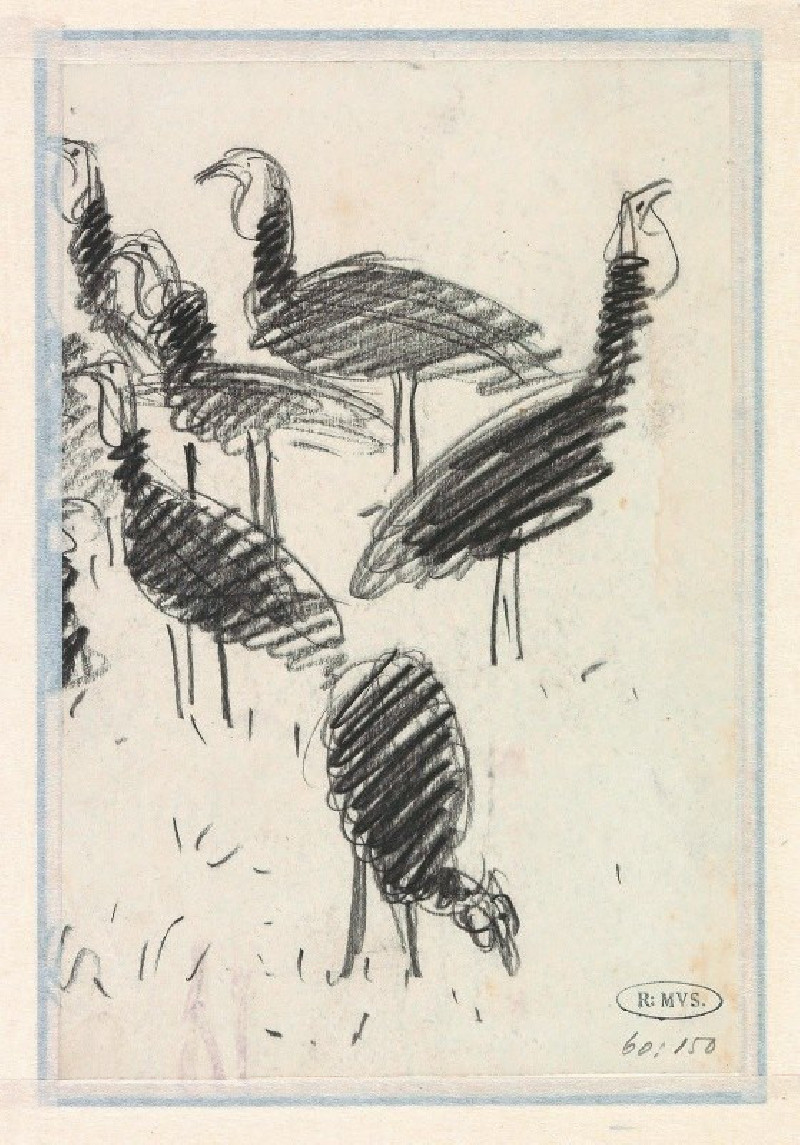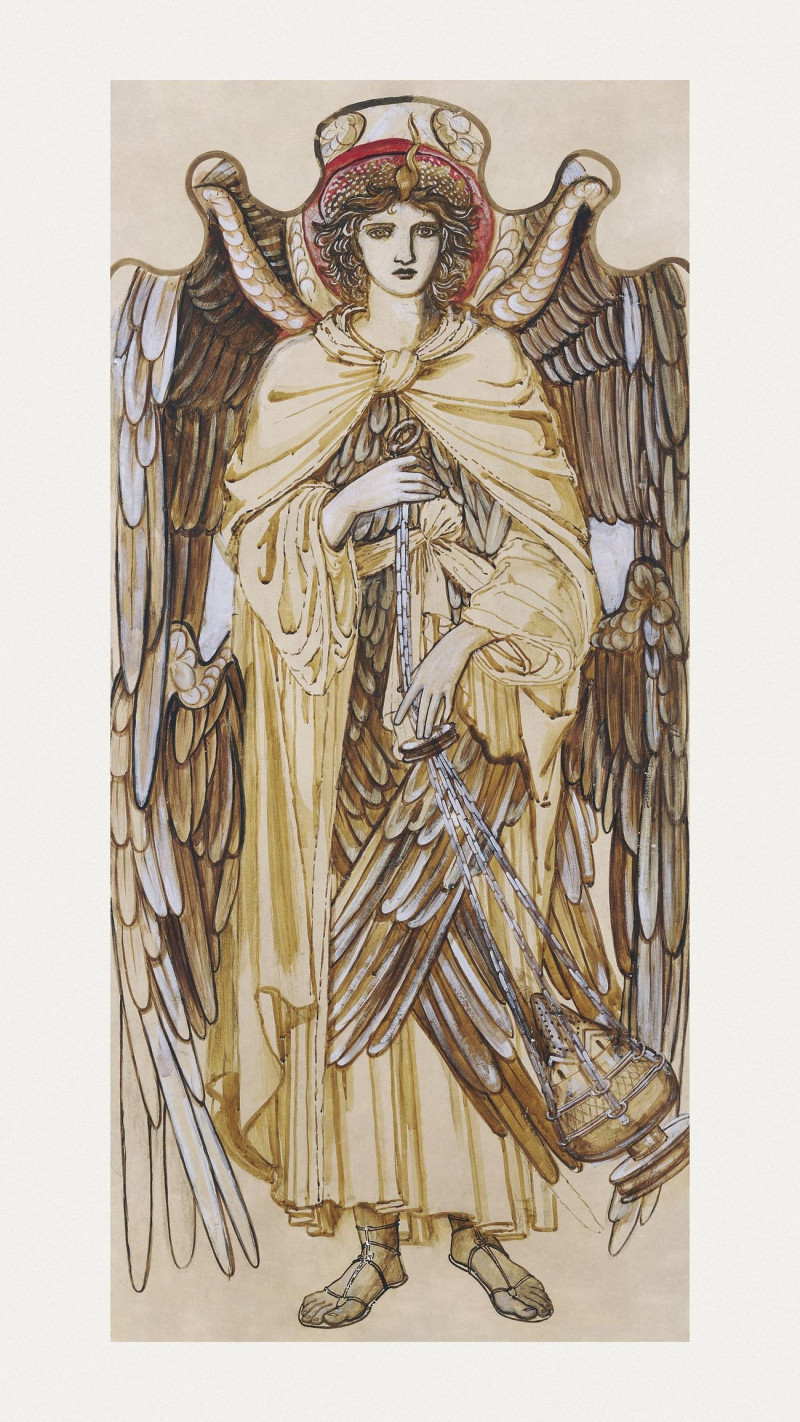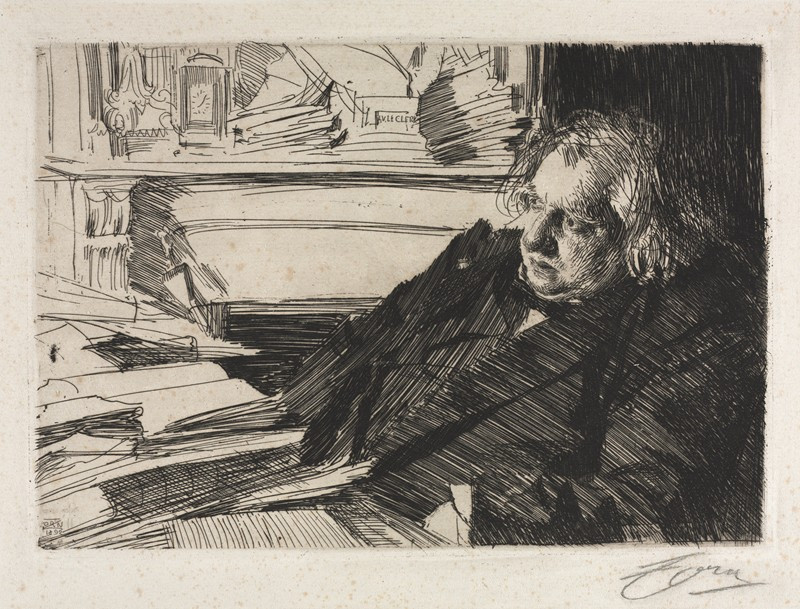Vue de Moret (1889)
Technique: Giclée quality print
Recommended by our customers
More about this artwork
"Vue de Moret" (1889) is a vibrant landscape painting by the revered Impressionist artist, Alfred Sisley. This splendid work captures the charming essence of Moret-sur-Loing, a picturesque village south of Paris that proved to be a significant source of inspiration for Sisley in his later years.The painting presents a serene view of the village across the gentle ripples of the Loing River, under the soft glow of a waning sun. The foreground features a shadowy pathway lined with slender, barren trees, evoking the crisp tranquility of late autumn or early spring. Whisper-thin branches reach upwards into the expansive sky, brushed in hues of cool blues and warm pastels, suggesting a sunset or the early evening.In the background, the village buildings, including the prominent church steeple, are painted in muted tones, their reflections shimmering in the water, blurring the line between the tangible and the reflection. The water acts almost as a mirror, adding depth and a calm, dreamlike quality to the scene.Sisley’s use of loose brushstrokes and lively, dappled colors captures not just the visual delight of the village and its natural surroundings, but also the fleeting, changing lights of the day. The small figures of people and a boat grounded near the river’s bank add life and scale, inviting the viewer to step into the peaceful day depicted.Alfred Sisley's "Vue de Moret" is a fine example of Impressionism, focusing on the natural scenery, the play of light, and everyday simplicity.
Delivery
Returns
Alfred Sisley (1839–1899), an English impressionist artist, was renowned for his breathtaking impressionist landscape paintings. Born in 1839 to a wealthy family in Paris, Sisley spent most of his life in France. Despite being intended for a career in commerce, he rebelled and pursued his passion for painting as an amateur in the studio of Charles Gleyre, where he befriended artists Claude Monet and Pierre-Auguste Renoir. The financial loss of his family in the Franco-German War led Sisley to make a career out of his art, though it left him financially distressed. It wasn't until after his passing in 1899 that the true value of his work was recognized.

